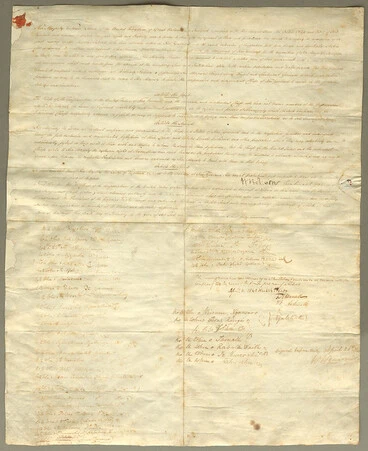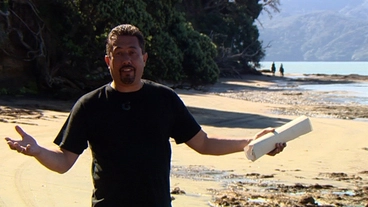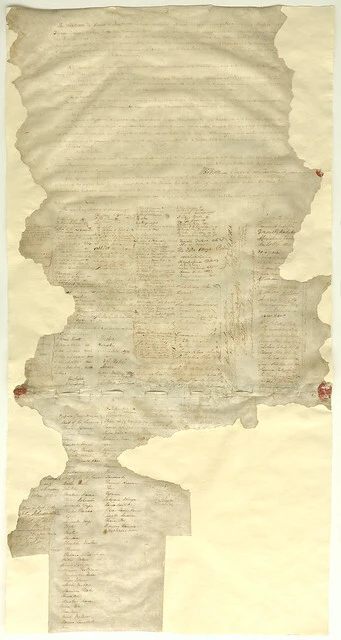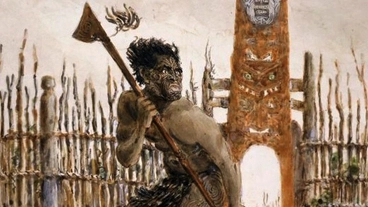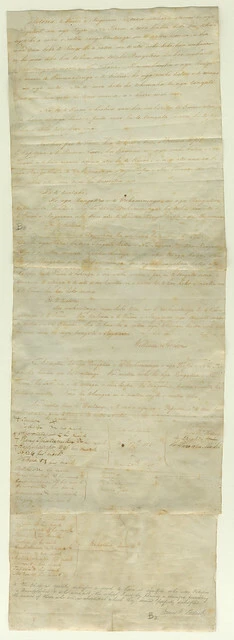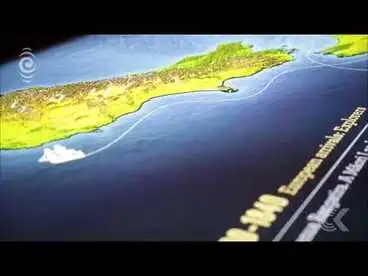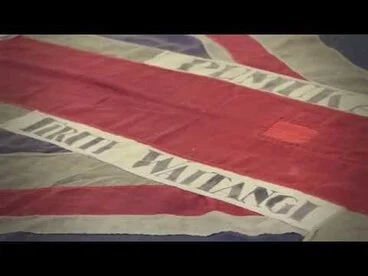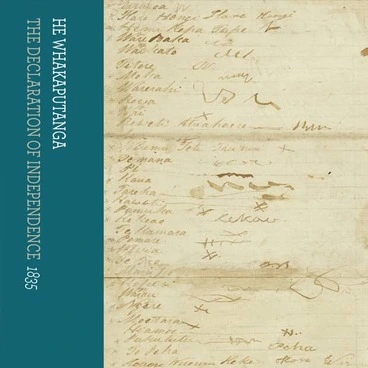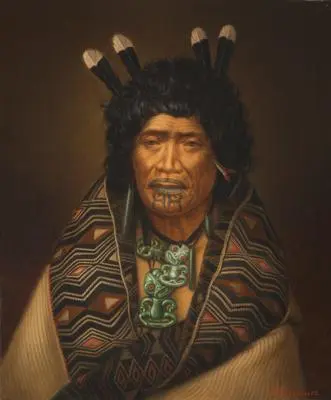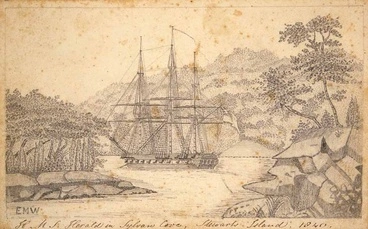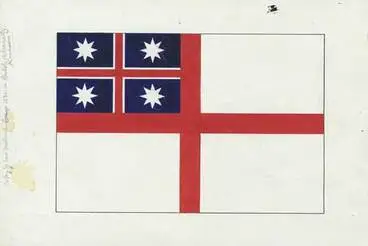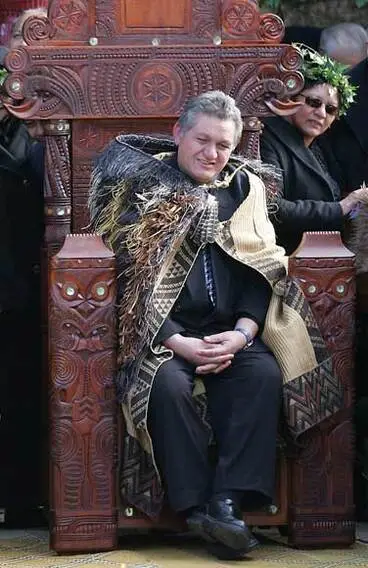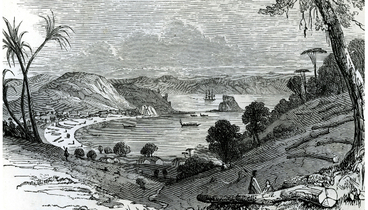Journey of the Treaty of Waitangi
A DigitalNZ Story by National Library of New Zealand Topics
The journey of Te Tiriti o Waitangi | The Treaty of Waitangi and its signatories is as important as Te Tiriti itself. This topic includes the events that followed the signing, and the impacts and shifting attitudes towards Te Tiriti over the years. SCIS no. 1970223
The Waikato-Tainui claim
Manatū Taonga, the Ministry for Culture and Heritage
Te Tiriti ki Waikato-Manukau | Waikato-Manukau sheet
Archives New Zealand Te Rua Mahara o te Kāwanatanga
Te Taiwhakaea Treaty settlement stories (Te Tai)
Services to Schools
Waitangi Tribunal, 2010
Manatū Taonga, the Ministry for Culture and Heritage
1975 – Setting up of the Waitangi Tribuna
Services to Schools
Treaty events since 1950
Services to Schools
The Treaty today – what went wrong and what are we doing about it?
Services to Schools
Te Tiriti o Waitangi | Waitangi sheet
Archives New Zealand Te Rua Mahara o te Kāwanatanga
Making the Treaty of Waitangi - Treaty signatories and signing locations
Manatū Taonga, the Ministry for Culture and Heritage
Printed treaty copy
Manatū Taonga, the Ministry for Culture and Heritage
Te Tiriti ki Te Moana o Toi Huatahi | Bay of Plenty (Fedarb) sheet
Archives New Zealand Te Rua Mahara o te Kāwanatanga
The New Zealand Wars
NZ On Screen
Descendant of Treaty signatory bemoans lack of consultation
Radio New Zealand
One hundred crowded years
Manatū Taonga, the Ministry for Culture and Heritage
First Waitangi Day celebrations, February 1934
Alexander Turnbull Library
Waitangi Day 1960s - Waitangi Day
Manatū Taonga, the Ministry for Culture and Heritage
NEW ZEALAND'S NATIONAL DAY - (Te Ao Hou - No. 35 June 1961)
Alexander Turnbull Library
Resource Management Act and treaty principles
Manatū Taonga, the Ministry for Culture and Heritage
Treaty of Waitangi now on public display
Radio New Zealand
Slane, Christopher, 1957- :'I really think you need these Treaty bungs'. 10 February 2012
Alexander Turnbull Library
Waitangi honoured with heritage classification
Radio New Zealand
1800 to 1993 – Treaty timeline
Services to Schools
1000 Treaty claims received
Radio New Zealand
Protests
Manatū Taonga, the Ministry for Culture and Heritage
Treaty protest posters: ‘The treaty is a fraud’
Manatū Taonga, the Ministry for Culture and Heritage
badge, protest
Auckland War Memorial Museum Tāmaki Paenga Hira
The Treaty
Museum of New Zealand Te Papa Tongarewa
Protesters with 'Why Celebrate Broken Promises' banner, Waitangi protest
Auckland War Memorial Museum Tāmaki Paenga Hira
The Treaties
Museum of New Zealand Te Papa Tongarewa
Where the Treaty of Waitangi was signed
Museum of New Zealand Te Papa Tongarewa
Pūmuka’s Flag: The mending of many hands
Museum of New Zealand Te Papa Tongarewa
Te Tiriti o Waitangi : The Cook Strait Sheet.
Museum of New Zealand Te Papa Tongarewa
New Zealand before the Treaty of Waitangi was signed
Services to Schools
Dr Thomas Hocken
Services to Schools
Preserving the documents
Services to Schools
1842 – The Treaty survives a fire in Auckland
Services to Schools
What happened after the Treaty was signed?
Services to Schools
Timeline of the New Zealand Wars
Services to Schools
Journey of the Treaty
Services to Schools
1877 – Chief Justice declares the treaty as worthless
Services to Schools
The voyages of Te Tiriti o Waitangi
Services to Schools
Waitangi Day Act 1976
Services to Schools
2016 – the Treaty times thirty
Services to Schools
The Treaty of Waitangi in art
Manatū Taonga, the Ministry for Culture and Heritage
Matthew Wright, author of Waitangi: a Living Treaty
Services to Schools
Talking Waitangi Day
Services to Schools
Treaty survey
Services to Schools
What changed for five iwi after the Treaty of Waitangi?
Services to Schools
Treaty of Waitangi
Services to Schools
The Treaty
Services to Schools
Canvassing the Treaty
Services to Schools
How cartoonists framed Waitangi Day
Services to Schools
1964 – Speech by Sir Bernard Fergusson
Services to Schools
First New Zealand Day at Waitangi
The Waitangi Day Act 1960 declared that 6 February would be known as Waitangi Day in commemoration of the signing of the Treaty of Waitangi. Prime Minister Norman Kirk in this article answers criticism at Tiriti O Waitangi marae on Waitangi Day 1974 for changing the name to ‘New Zealand Day’. It was the Waitangi Act of 1976 that reinstated the name Waitangi Day.
Alexander Turnbull Library
Dominion Museum
The Treaty documents that Thomas Hocken discovered in 1908 in the basement of Government Buildings in Wellington were water damaged and partially eaten by rats. In 1913 the documents were sent by Internal Affairs Department to the Dominion Museum in Wellington. It was here that staff began repair work by filling in the holes in the parchment sheets. However, this restoration work caused more damage!
Alexander Turnbull Library
Dr G H Scholefield
Dr G H Scholefield was a parliamentary librarian at the General Assembly from May 1926 to March 1948. He was also controller of the Dominion Archives in 1931 when the Hawkes Bay earthquake took place. He advised the Department of Internal Affairs that the founding documents should be stored well away from earthquake fault lines, such as those found in Wellington. His advice was ignored, and the documents remained for many years in the Government Buildings.
Alexander Turnbull Library
Rangi Topeora
Auckland Art Gallery Toi o Tāmaki
Pohaturoa Rock at Whakatane
This is Pōhaturoa rock in Whakatāne where Ngāti Awa gathers for a dawn ceremony every year on 16 June to celebrate the signing of the Bay of Plenty Sheet by 12 rangatira on 16 June 1840. The sheet was taken around the Bay of Plenty by trader James Fedarb on the schooner Mercury. Anglican missionary Robert Maunsell witnessed the signatures. Gifts of pipes, ditto boxes, looking glasses, tobacco and beads of slate were given out at the Whakatāne signing of the Treaty.
Alexander Turnbull Library
This is a portrait of Rev William Williams, the brother of Henry Williams, a senior Church Missionary Society missionary who translated the Treaty of Waitangi into Māori. William Williams was given the East Coast Treaty Sheet to obtain signatures of chiefs from the East Cape through to Ahuriri. He collected around 41 signatures. The CMS missionaries and the Wesleyans welcomed the Treaty of Waitangi and helped collect signatures for it.
Rev William Williams
Alexander Turnbull Library
Tribunal site visit, Wairau
Manatū Taonga, the Ministry for Culture and Heritage
Where do Pasifika fit in the Treaty of Waitangi?
Services to Schools
Waitangi Tribunal meets at Ōrākei
Manatū Taonga, the Ministry for Culture and Heritage
HMS Herald at Stewart Island, 1840
Manatū Taonga, the Ministry for Culture and Heritage
He Whakaputanga, English
DigitalNZ
New Zealand History
DigitalNZ
Treaty of Waitangi
DigitalNZ
